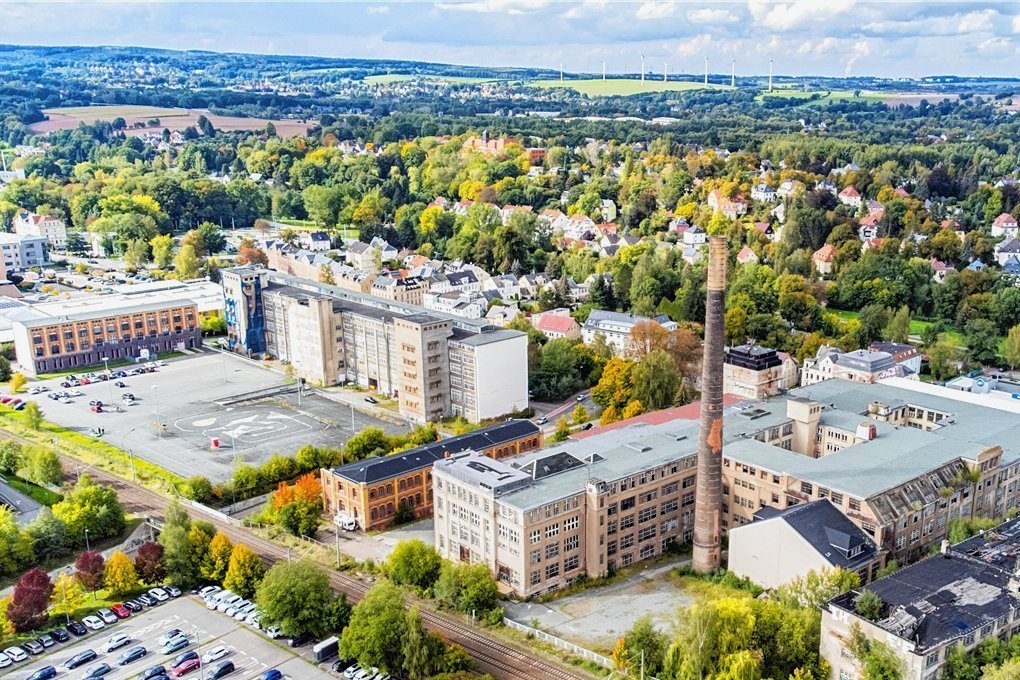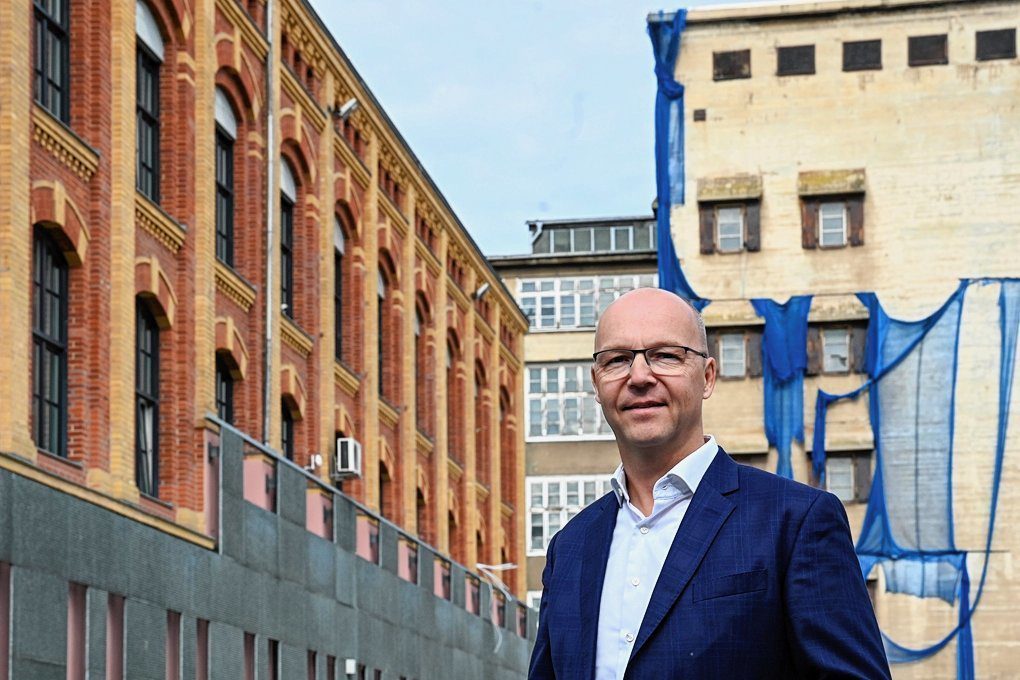What is to become of the Wanderer plants in Chemnitz
The Gemac company is the only major user in the former industrial area and is struggling with the decay around it. Now the owners of the cityscape-defining buildings have presented their plans.
The Wanderer site stretches between the railroad line (in front) and Zwickauer Straße. Most of the buildings are empty and dilapidated. The biggest exception: the headquarter of the GEMAC company on the left edge of the picture. Photo: ERZ-Foto/Georg Ulrich Dostmann
While other former industrial complexes such as the Wirkbau on Annaberger Strasse and the Spinnereimaschinenbau on Altchemnitzer Strasse are gradually being revived, nothing is happening at the Wanderer site. The main complex, the Wanderer-Werke, was built almost 130 years ago for vehicle and machine construction. Initially, the “Wanderer Fahrradwerke AG” produced mainly bicycles, and later also milling machines, motorcycles, typewriters and cars. After the Second World War, the company was expropriated and broken up. In West Germany, Wanderer-Werke AG continued to exist — under different names until its insolvency in 2010.
The industrial site in Schönau was also used for small-scale production during the GDR era. Since reunification, despite repeated attempts by investors, vacancy and decay have dominated the approximately five-hectare area. Apart from GEMAC, only a few companies have settled here so far, including a moving company. There are no other forms of use.
This is now to change. The plans of the owners were presented to the members of the Committee for Urban Development and Mobility in a non-public meeting. “Freie Presse” has received the presentation. According to the plans, the area is to develop away from a purely commercial area to a mixed area consisting of residential, work, leisure and social facilities.
GEMAC has been at home here for 20 years. Managing Director Tilo Rothkirch is thinking about expansion — and would like to see the area revitalized. Photo: Andreas Seidel
The cityscape-defining Wanderer plants on Zwickauer Strasse is to be split into four units. The largest part is intended to be used for science and creativity, another area for exhibitions and events. In addition, studios and residential lofts are planned. The owner of the works is an asset management company based in Berlin. It submitted a building application in March, but City Hall considers it incomplete.
Apparently more concrete are the plans for the long six-story building with the large glass front. The owner of this building is Rock Immobilien Gesellschaft from Leipzig. It wants to convert about two-thirds of the building — especially the upper floors — into apartments. The remaining part will be reserved for offices, co-working spaces and small businesses. There are also plans to build two new houses on the green space in front of the building, which will primarily house smaller commercial spaces.
To enable the owners to implement their plans, the Committee for Urban Development and Mobility has initiated the corresponding construction plans. It also defined what is undesirable in the area: car dealerships, brothels, gas stations, gardening businesses and large-scale retail such as supermarkets. There are enough of the latter in the surrounding area — for example at the Siegmar train station, explained Börries Butenop, head of the city’s planning department.
Beyond the ideas of the owners, the city hall has its own plans for the Wanderer site. It is considered one of the focal points for the redesign and upgrading of Zwickauer Strasse in the coming years. Among other things, the city hall wants to extend the streetcar line to Reichenbrand and have it relocated to Zwickauer Strasse. A small town square with a transfer point, including charging stations and an information point, is therefore to be built at the Wanderer Quarter. However, all of this will probably take years: The development plan that has now been initiated by the committee will probably not be in place until the end of 2023.
© Copyright Chemnitzer Verlag und Druck GmbH & Co. KG
Author: Benjamin Lummer




